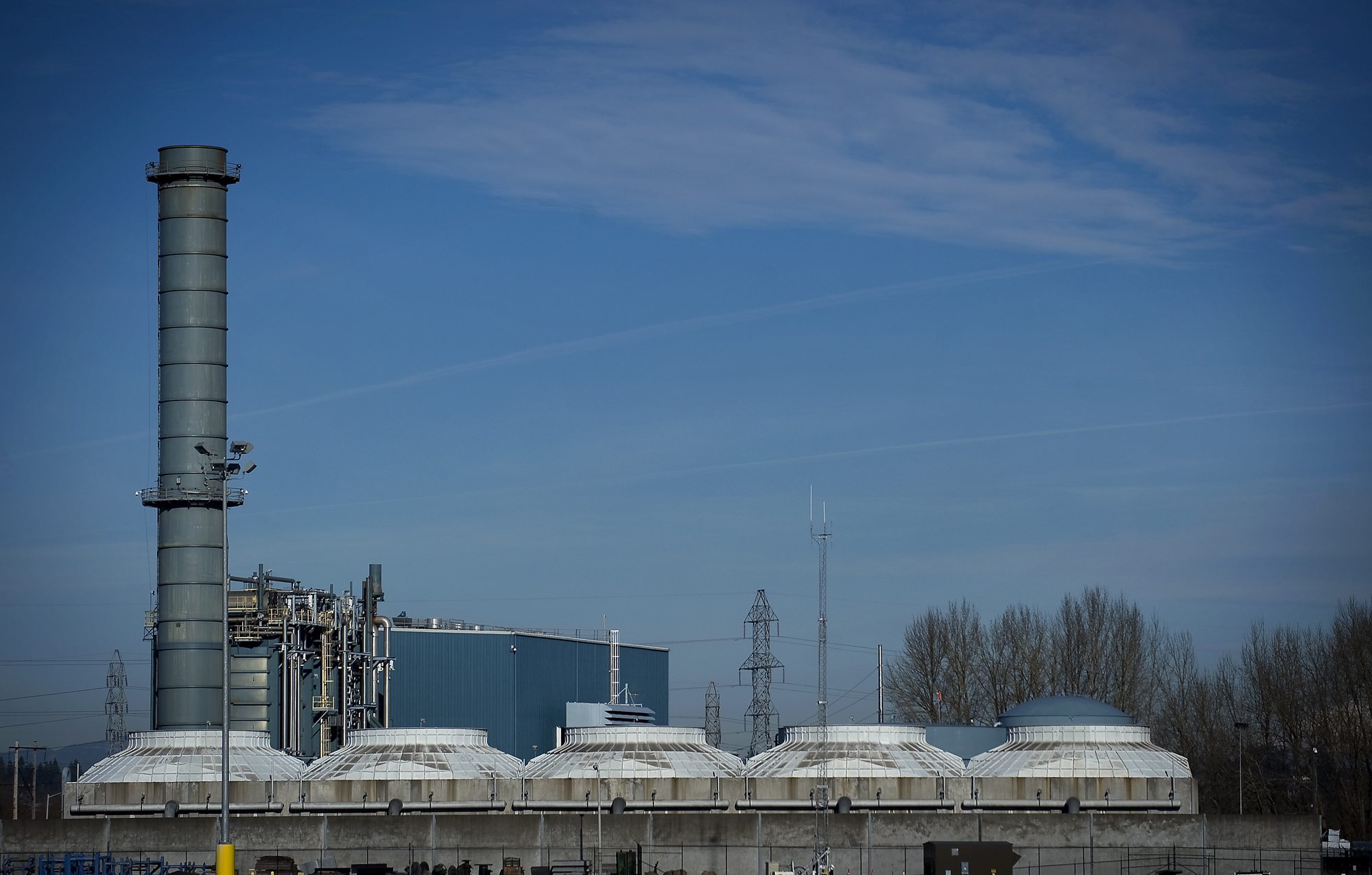Clark Public Utilities’ gas-fired River Road Generating Plant is the 10th biggest greenhouse-gas polluter in the Northwest, according to an analysis of new federal data by the environmental news arm of Oregon Public Broadcasting.
The analysis, based on a first-of-its-kind public database of industrial greenhouse gas emissions released this week by the Environmental Protection Agency, shows the River Road power plant emitted about 650,000 metric tons of carbon dioxide in 2010. Carbon dioxide and other greenhouse gases have been linked by scientists to global climate change.
Erica Erland, a spokeswoman for Clark Public Utilities, said the utility is in full compliance with all EPA emissions regulations.
The utility also is a founding member of the nonprofit Climate Registry, Erland said, where it has voluntarily reported the River Road facility’s carbon dioxide emissions. In 2010, the quantity of those emissions was 842 pounds of carbon dioxide per megawatt hour of generation — below the Climate Registry’s Northwest default quantity of about 859 pounds of CO2 per megawatt hour of generation, according to Erland.
Erland said the EPA’s database of greenhouse gas emissions focused exclusively on “single-source emissions,” or emissions from large
industrial facilities and suppliers. “Transportation is more than half of our greenhouse gas emissions in the state of Washington,” she said.
‘Transparent’ data
Gina McCarthy, assistant administrator for EPA’s Office of Air and Radiation, called the new database a “transparent, powerful data resource” for the public. The information on greenhouse gas emissions — gathered by EPA through a reporting program launched in October 2009 — also provides a “critical tool for businesses and other innovators to find cost- and fuel-saving efficiencies that reduce greenhouse gas emissions, and foster technologies to protect public health and the environment,” McCarthy said in a news release.
The analysis by OPB’s Earthfix found that the single largest greenhouse gas polluter in the Northwest — encompassing Washington, Oregon and Idaho — is the TransAlta coal-fired power plant in Centralia. The plant belched nearly 10 million metric tons of carbon dioxide in 2010, according to EPA data.
The Northwest’s second-largest greenhouse gas emitter, the analysis revealed, is the Portland General Electric coal-fired plant in Boardman, Ore. That power plant spewed nearly 4 million metric tons of carbon dioxide in 2010.
Washington state is moving to phase out TransAlta’s coal-burning plant in Centralia. Meanwhile, Portland General Electric is slated to stop burning coal at its Boardman plant by 2020.
Among the Northwest’s 10 biggest sources of carbon dioxide, seven are power plants in Oregon or Washington, according to the Earthfix analysis. The other three are refineries in Washington.
‘A steady increase’
Clark Public Utilities, which provides electricity to more than 183,000 residential and business customers in Clark County, gets its energy from a mix of sources, including Bonneville Power Administration, its gas-fired River Road Generating Plant and purchases on the open market.
Under Initiative 937 — the statewide renewable energy law passed by voters in 2006 — Clark PUD has also incorporated wind energy into the power supply it maintains for its customers.
It’s not unusual for the utility to shut down the River Road plant at times during the year, including for maintenance. The utility also turns the plant off when it’s cheaper to purchase electricity on the open market rather than generating it locally. It’s also taken the power plant off line because BPA has requested it.
Erland said the River Road plant is an important part of the utility’s ability to provide affordable, reliable electricity to its customers. “We predict that there will be a steady increase in the number of gas-fired turbines across the country,” she said.
The power plant is especially important to have as the utility adds wind — a renewable but irregular source of power — to its portfolio of energy sources, she said.
That’s because the River Road plant’s reliability enables the utility “to shape and stabilize the new supply of renewable power,” Erland said.
What the data say
The EPA’s online data publication tool — http://epa.gov/climatechange/emissions/ghgdata/ — allows users to view and sort greenhouse gas data for 2010 from more than 6,700 facilities, including by facility, location, industrial sector and the type of greenhouse gas emitted.
The 2010 data include public information from facilities in nine industry groups that directly emit large quantities of greenhouse gases, and suppliers of certain fossil fuels, according to the EPA.
The data show:
• Power plants were the largest stationary sources of direct emissions with 2.3 billion metric tons of carbon dioxide equivalent, followed by petroleum refineries with emissions of 183 million metric tons.




